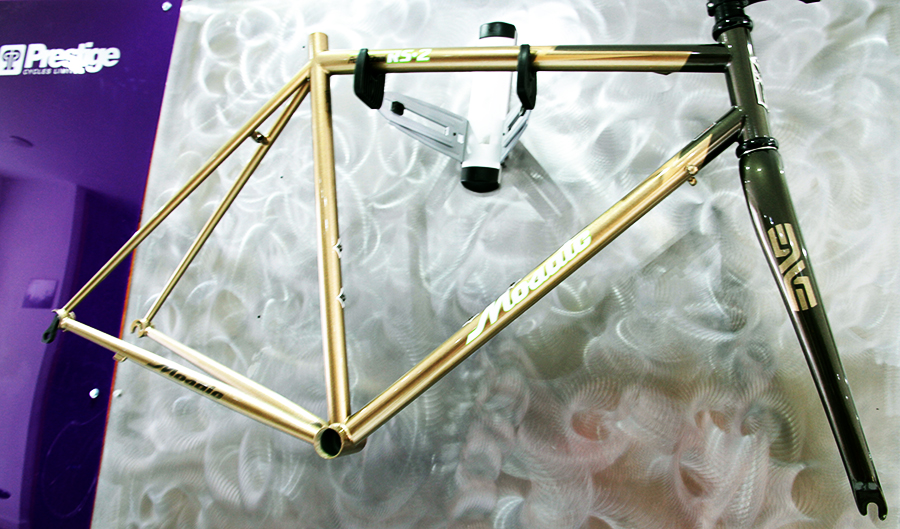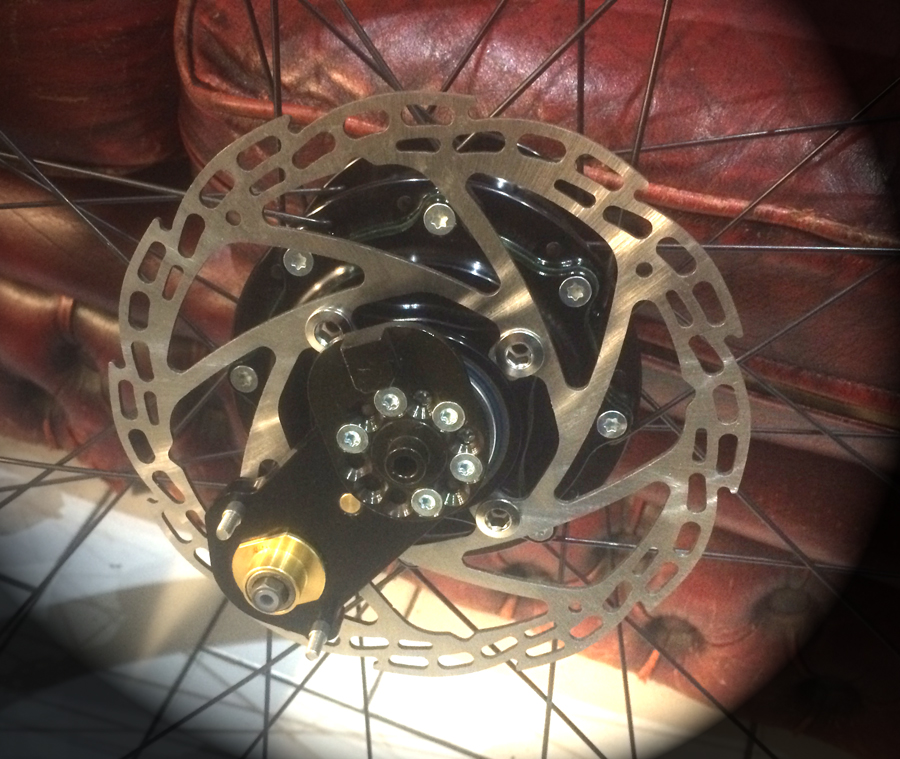Life’s Magic Cycle….With Added Prestige.
Intended to bestow the masses with adorable and affordable exclusivity, Mustard was a cooperative venture devised by Stephen and his supreme frame sculptor, Mark Reily, a former disciple of elite UK manufacturer Enigma and proprietor of his personally nurtured brand, Nerve.
Mark is a Savant in the art of manipulating every grade of steel to be touched by human hands and with Stephen, had capitalised on its rampant resurgence by formulating an adaptable frameset for under £1000, consisting of Reynolds 853 tubing. Scarcely loose change but for a bicycle backbone assembled to spec by a craftsman of renowned calibre, a steal…in more than one sense.
Stephen explained that Mark was based in Newhaven and conducted his wizardry from an impeccably appointed workshop. So stunned was I when he went on to suggest that the 953 should be easy enough from him to harvest, that he had to instruct me not to pedal with my heels.
The program he uses is Dartfish, an intricate CAD based application employed by accredited forces throughout the sports industry to forensically analyse and refine the techniques of a diverse range of athletes. Having been devised to address a multitude of physical activities outside the realm of cycling, the software provides a broader scope for intuitive adjustment and can collate more informative data on its subjects.
The rider’s stats are fed into corresponding fields and as the pedals revolve, their actions are monitored in real-time as the program dynamically tracks every postural characteristic and highlights any indigenous tendencies, good and bad. From here, tweaks of the finest granularity are applied to the machine in order to correct anomalies such as lateral movement of the knees during pedal strokes and inadequate or excessive extension of the legs at the base of each rotation.
Regardless of their requirements, these pivotal modifications are essential to maximise a rider’s efficiency and avoid a catalogue of pernicious injuries triggered and aggravated by careless guesswork.
Stephen was keen to remind me that the system isn’t fool proof and that feedback from the customer is compulsorily to achieve an optimal fit. No single bike can serve every riding discipline. A competitive road or track racer may benefit from an acutely appointed frame that induces an aggressive posture. A flat crossbar, a more sharply inclined seat tube, a shorter stem for responsive handing, a steeper drop from the saddle to the handlebars and a greater distance between these two points to ensure the spine is less arched and minimize air resistance.

If there existed a moniker that aptly defined my species of cyclist, it would be “UET” or “Unadventurous Endurance Tourer”. I explained that as a gym phobic, my bike was everything from a rowing machine to a cross trainer and that when at operating at hard tempo my hands fidgeted over bar tape as though it were the surface of a ceramic hob .
I’d found drops on the Giant and the Pashley extremely conducive to comfort over exceptionally long and arduous treks since they catered for multiple riding positions, in and out of the saddle, thereby exercising a variety of muscle groups and minimising lower back fatigue. The problem had been with balance. Despite both bikes tipping the scales at over 5 kilos below the Dawes’ bulky 17, their comparative lack of stability on the steepest ascents, owing mainly to the bars’ reduced width, wasn’t worth the Strava kudos…not that I had attained any!
Having excelled as competitive mountain biker and managed his own racing team, Stephen was more solicitous than ever over the importance of equal weight distribution and attentive to my desire for a wide centre of gravity. He recommended a flat top bar with ergonomic grips and bull horn extensions for additional leverage on hills. “Practicality over prettiness” he surmised. I readily agreed.
A minute of two’s further spinning proceeded in cogitative silence, broken only by the fitting machine’s humming monophony and the harmony of Stephen’s iPhone as it fielded an avalanche of eager enquires. I reflected over what had at dawn had been a distant dream and at dusk stood poised on the boundaries of reality.

The fact that I had opted for black wheels with matching spokes, combined with a Rholoff Hub and a Schmidt Son dynamo arrayed in identical attire, meant there was major decision left to discuss, that of an appropriate paint scheme.
Though painting an area that amounts to no more than a square yard may sound as simple as putting on a helmet, in truth, the levels of diligence and skill required are close to those employed when forging the frame itself and the margin for error almost as narrow. In an effort to assuage my irrational impatience without sacrificing a sliver of quality, Stephen insisted that a former teammate based in Bournemouth and now fronting his own operation, could execute the swiftest and most professional job he could envisage. Mustard’s signature would be manifest in polished steel, peeking through layers of translucent lacquer, tastefully picked out by a silver boarder and surrounded by premium coats of glittering onyx élan.
I didn’t care so long as the three weeks it was likely to take didn’t push us too far past the commendable two months Stephen had estimated it would take to complete the project.




